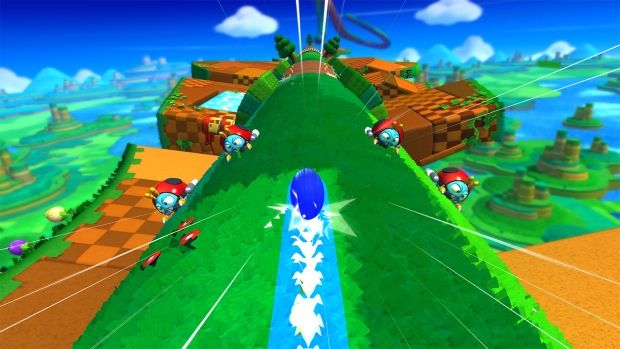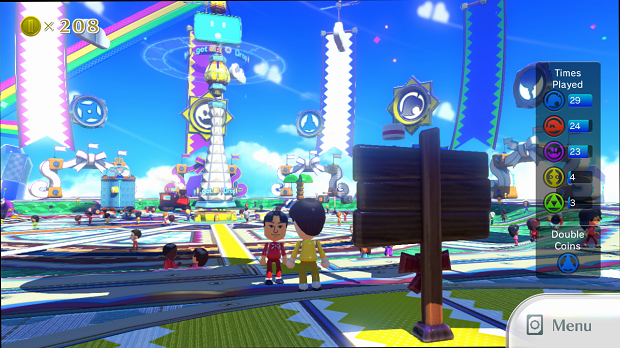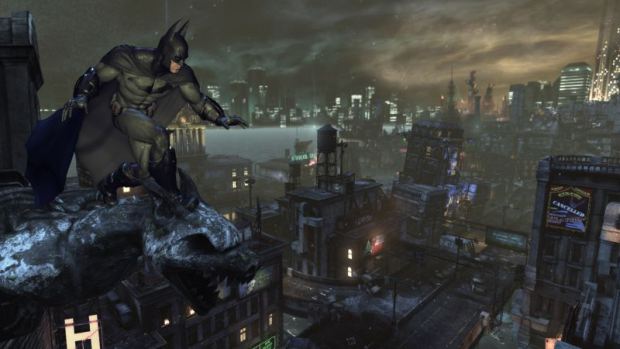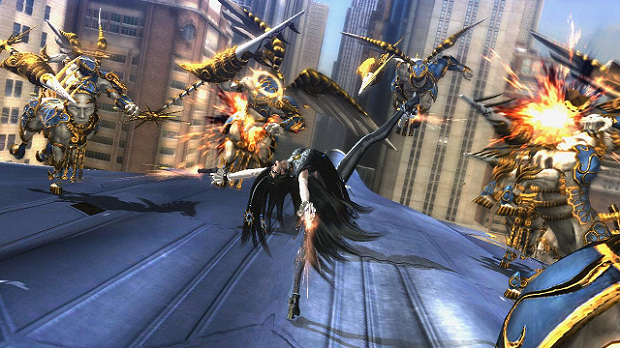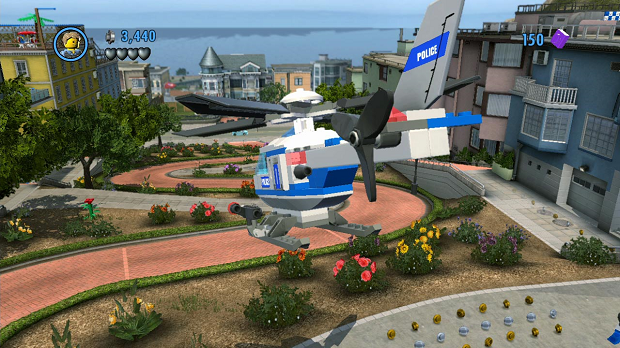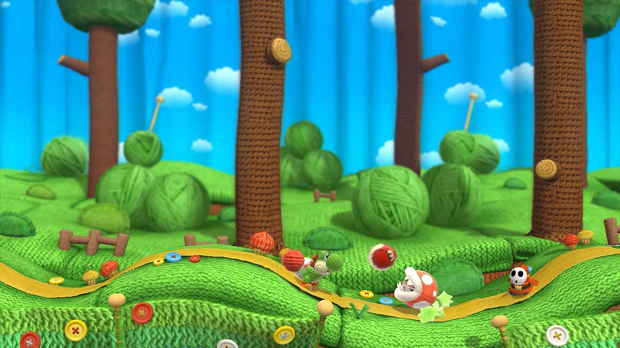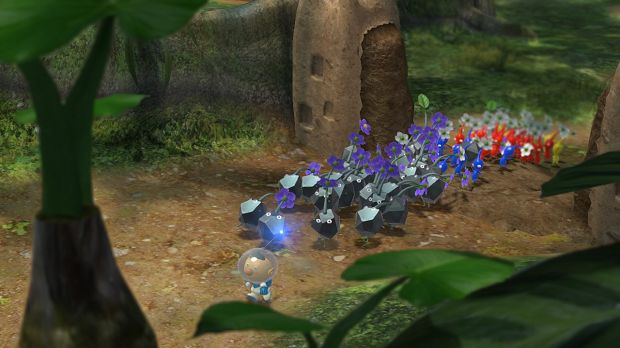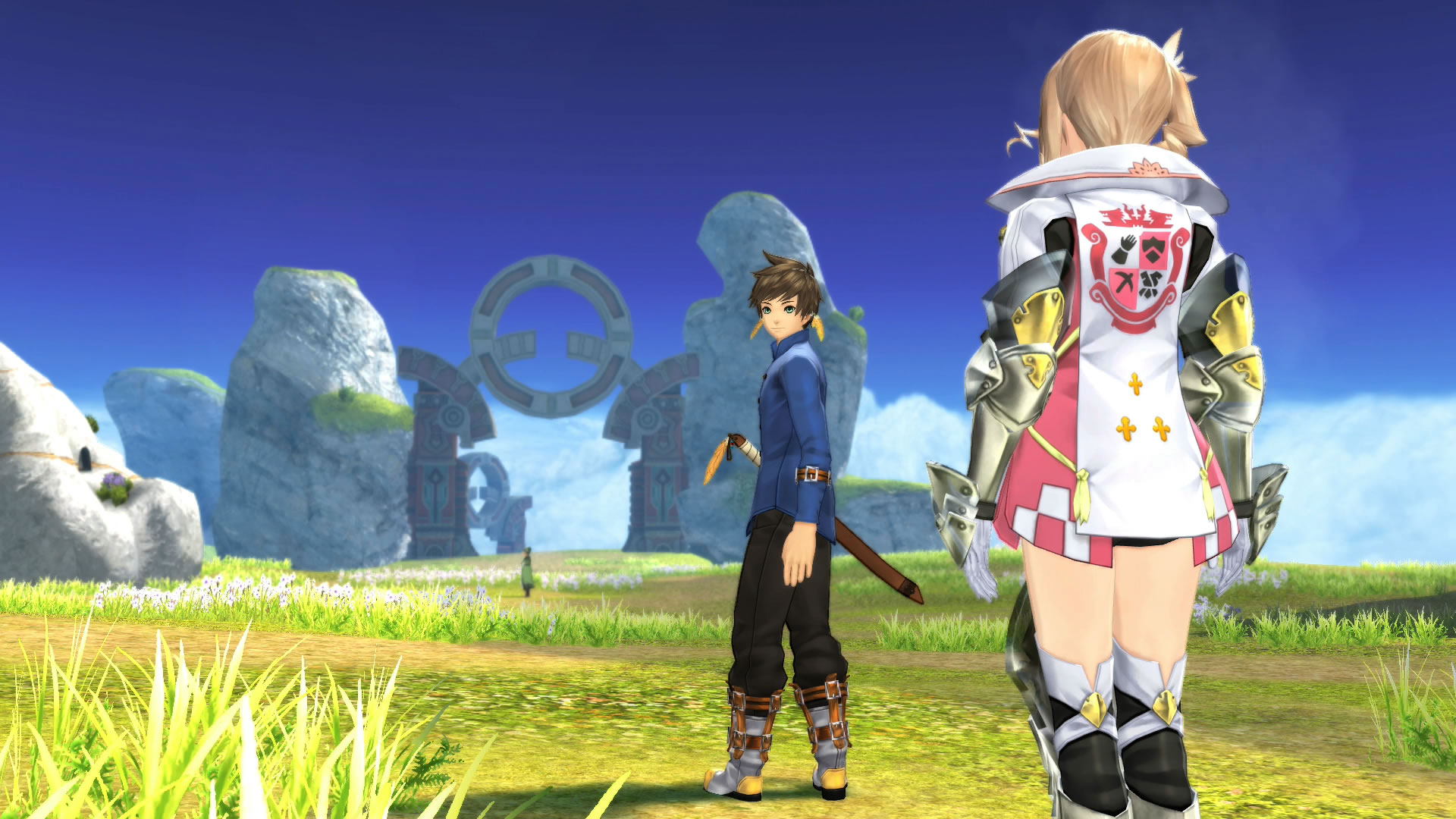Track List:
- Llama
- Eliza
- Cavern
- Poor Heart
- Stash
- Manteca
- Guelah Papyrus
- Magilla
- The Landlady
- Glide
- Tweezer
- The Mango Song
- Chalk Dust Torture
- Faht
- Catapult
- Tweezer Reprise
Hello! It sure has been a while since I’ve done this. Forgive me; I’m still getting used to being able to write about things I like again. And, hey, A Picture of Nectar is a thing I like!
My previous installments about Junta and Lawn Boy involved a lot of hesitation to embrace the albums completely, but here, for the first time in Phish’s studio history, the balance tips. For my money, A Picture of Nectar contains more to recommend it than to detract from it, and it’s the first sustained evidence that they could function as an effective studio band. (Their legacy as a live band was never in question.)
Having said that, it’s also their most scattershot album to date. The band tried everything they could to find their studio footing once and for all…and it’s an exercise under which you can feel the album straining. As such, there are a lot of skippable tracks, but when the band hit upon something that worked — which it did quite often here — it really worked, and a few of these tracks are among the best they’ve ever recorded.
A Picture of Nectar is also the first time that the band’s playfulness was captured for the home listening audience, and it’s more successful for it. When the band has fun, we have fun, and A Picture of Nectar is absolutely a portrait of a band having fun.
We’re still a couple of albums away from Phish truly delivering a thorough studio masterpiece, but with this album they learn both how to do it, and how not to do it. It’s an experiment that’s thrilling and frustrating, but moreso the former, and if you don’t mind trimming a few of the lesser tracks from your playlist, A Picture of Nectar gets even stronger.
Llama
Speaking of lesser tracks!
…okay, okay, “Llama” isn’t really that bad. But compared to A Picture of Nectar‘s true accomplishments, “Llama” feels like filler.
Choose not to compare it and you end up with a pretty fun — if shallow — rocker with some incredible percussion and a great, swirling synth to carry it along. The lyrics are deliberately impenetrable (people debate to this day what the chorus even is), and putting this at the very front of the album feels like a promise of incoherence to come. That’s not necessarily a bad thing, but if it’s not your thing, you may want to skip ahead a few years and pick up a different Phish album.
The band is experimenting, and figuring out what works is neither an easy process nor, necessarily, a crowd-pleasing one. “Llama” lets listeners know that whatever’s to come may be fun, and may be catchy, but it won’t necessarily be polished. In a live setting, “Llama” is an energetic palate cleanser. On disc, it’s practically a dare to keep listening.
Eliza
…which is what makes it odd that it’s followed up immediately by the quiet, pretty instrumental “Eliza.” In fact, “Eliza” is the second part of the mission statement of A Picture of Nectar. If “Llama” disarmed you, “Eliza” tries to convince you that it’s worth pushing through the rougher patches. You just might find something beautiful, wedged between two monsters.
And it’s right; there’s a lot of beauty to find here. But I do have to admit that “Eliza” is kind of empty. It sounds pretty, and yet also sounds like nothing at all. It’s there…an airy coda to its rampaging predecessor, but it doesn’t register to me the way some of Phish’s other “pretty” interludes do (see “Bliss” or “The Inlaw Josie Wales”).
It’s there. It’s fine. And it lets you know that the whole album isn’t “Llama.” Mission accomplished.
Cavern
“Cavern” is one of those Phish songs that all of the fans know and seem to love, but which never really clicked with me. It’s not awful, and I can appreciate a lot of things about it (read on!), but its popularity and frequency of appearances in setlists always confused me.
Wait, have I been down on all of these songs so far? I really am a miserable human being, aren’t I?
So, okay, fine, it doesn’t work for me on the whole. Ignore that small detail, though, and I appreciate how well it manages to take nonsense lyrics and weave what feels like an actual story. It’s a bit of an illusion, admittedly, as it relies on the instrumentation to build the atmosphere, set the pacing, suggest narrative climax where — strictly speaking — there is none, but that’s sort of the point of songwriting in general, so it’s no kind of cheat.
The plodding rhythm, the echoing drums, the repetitive grind of the groove…everything serves to underscore an idea, an atmosphere, a setting. And, largely, it works. “Cavern” is a journey I’d have a hard time summarizing, but it’s one I can feel.
Interestingly, “Cavern” isn’t the only song on the album that does this; “Stash” also spins a tale of nonsense that seems important in a way that transcends — or at least has nothing to do with — words as we understand them. But we’ll come to that soon enough.
The other thing the song does well is its triumphant concluding verse — from which the album takes its name — repeated with increasing enthusiasm as long as it takes to really sell the infectiousness. It’s a great conclusion to an otherwise fairly pedestrian track, and it’s why the song works so well (and so often) as a set closer.
On a live note, a horn section enhanced the rave-up swirl at the end of the song several times throughout the band’s live history, and that’s a nice variant to seek out if you’re interested. Personally I do think the brass adds something to the excitement, but the vocals do a good enough job of selling the triumph on their own, so it’s not a make/break situation; it’s just a pretty cool thing to hear after you’ve experienced the hornless version so many times.
Poor Heart
A simple bluegrass ditty by bassist Mike Gordon about somebody swiping his tape recorder. It’s…man, I am not doing a good job of selling you on this album yet, am I?
It’s not bad. It’s fun. It’s a bit of a one-note experiment, but it’s brief and toe-tapping enough that it doesn’t overstay its welcome.
But…well, that’s it. It’s just sort of there, and it’s nowhere near Mike Gordon’s best composition or the band’s best dalliance with bluegrass. (See the next album’s “Fast Enough for You” for that honor.)
Stash
Now we’re talking. Honestly, don’t the opening notes convince you enough of that on their own?
“Stash” is just…man.
Just…just listen to it. “Stash” is fun. “Stash” is dark. “Stash” is silly and urgent and an incredible meld of composition and musicianship. “Stash” is Phish. And while I’m sure others would point to something like “You Enjoy Myself” as their singular example of what the band is, I think I’d have to point to “Stash.”
It’s an absolutely perfect listening experience. And, yes, it’s a song that takes on new life again and again on stage, with long jams teased out of it unexpectedly or just fiery straight versions played to audiences lucky enough to be there and feed off of it, but its studio version, I think, merits attention.
This is a chance to appreciate the song’s twisting melodies, its tense stop/starts, its masterful interplay between instruments which seem to having important conversations of their own — certainly more important than anything the lyrics have to say.
And yet the lyrics feel like they are saying something important. The story they weave — whatever it’s about, whatever happens in it — has a sense of significance, of weight, of value. And while the lyrics on paper, with all their talk of tunic yankings and solar garlic, seem frivolous, in performance they’re anything but. I couldn’t tell you what anything here is supposed to mean, but I could sure tell you how much it feels like they have meaning.
It’s evocative. What you don’t understand, you still experience. Trey’s guitar work in particular is thrilling. It evokes an endless rush of panic. Near misses. Narrow escapes. The sense that you reach the end of each bar alive by the skin of your teeth.
It’s just all around great, and I think it says something that a song best experienced live is still so solid in the studio, without the energy of the crowd to bolster it, without the benefit of nightly surprise and experimentation, without the freedom of slipping into and out of other songs at will.
“Stash” is one of my favorite compositions, and one of my favorite examples of studio Phish. It doesn’t capture the band’s experimentation, but it does capture their raw, burning power when they’re at their cohesive best, and this one goes down in history books for me.
Manteca
Here’s a great joke: a band well known for their inventive covers of other people’s work finally records a song they didn’t write (one by Dizzy Gillespie) and it’s just them repeating some nonsense that sounds vaguely like the original song.
Ha ha.
Guelah Papyrus
The best song on the album, and one of Phish’s best ever.
Listening now I don’t know why I didn’t list this along with “Cavern” and “Stash” as a nonsense song that still tells a story. Maybe it feels less to me like a story than an evocative scene. Maybe it feels less like nonsense. Whatever the reason, “Guelah Papyrus” seems like a truly unique composition…one I’d have a lot of trouble finding direct comparison to.
It’s lovely. It’s gorgeous. It’s rocky and smooth. It’s got an incredibly addictive beat that often finds me playing the song several times in a row. And its instrumental section manages to feel like an organic part of the composition in a way that it actually isn’t. (It was originally an unrelated tune called “The Asse Festival.” So, yeah, the title “Guelah Papyrus” is a definite trade upward.)
It meanders and it drives. It lounges and it hurtles. It spouts nonsense and suggest profundity. It’s a truly great song, and one of the few that I’ve always wanted to hear in concert and never, so far, have been fortunate enough to catch. It’s also, along with “Stash,” evidence that Phish was finding out how to use the studio…how to enhance their compositions rather than distract from them, how to achieve a kind of musical precision they couldn’t rely on otherwise, with embellishments like the echo effect applied to the backing vocals filling out the song in ways that feel natural and not calculated.
I love “Guelah Papyrus.” If I were able to take only one studio Phish song to a desert island with me, it might well be this one. Which is fitting, as the lyrics seem to outline the spidering thoughts of some endlessly drifting, hopeless protagonist who crossed the wrathful, mysterious Guelah herself.
Who is she? What did she do? The chorus claims that “this is the work of Guelah Papyrus,” but what is her work?
It doesn’t matter. What matters is how it affects our singer.
And us.
And it affects me in ways that I’m almost glad I have trouble expressing; that means they stay specific to me.
Magilla
Our first Page McConnell composition, and by no means his best. Page is my favorite member of Phish — his keys anchoring nearly all of my favorite songs and favorite jams — but there’s no denying that he was a bit uncertain of his talents for much of the band’s life.
Later compositions would be marked improvements, but it wasn’t until he embarked on a career outside of Phish (first with Vida Blue, then under his own name) that he really found his voice as a songwriter.
Still, “Magilla” is good. It’s a minor, jazzy interlude that doesn’t do anything wrong, but definitely fails to live up to the rest of the album. It’s also disappointing that the piano-heavy song by the band’s pianist is entirely bowled over by a far superior piano song that takes over as soon as this one ends.
The Landlady
As “Guelah Papyrus” contained “The Asse Festival,” “The Landlady” would go on to be absorbed by “Punch You in the Eye,” a live-only song that fairly gracelessly plopped this tune into its middle when it needed an interlude.
That’s kind of disappointing, as “The Landlady” feels to me like it deserves to be more than breathing room in a different song. On its own, here, in the studio, it’s a great, rollicking salsa that manages to feel like more of a successful genre experiment than “Poor Heart” or “Magilla” did.
Those songs achieved what they set out to do — chart some more sonic territory for the band — but “The Landlady” succeeds at being…sort of great. Not complex, not revolutionary, but great within its own tight boundaries. And it’s an excellent spotlight for both Page’s nimble fingers and Trey’s screaming fretwork. It’s chilly and fiery at once, and it’s one of my favorite studio instrumentals from the band.
Falling where it does on the album, right here in the rough middle, it’s easy to overlook but worth seeking out. It’s a chance to observe the band growing into itself, setting out to dabble and ending up mastering.
“The Landlady” isn’t just a rough Latin sketch…it’s a Phish song. And a good one. “Punch You in the Eye” may have long outlived it, but I really enjoy the evidence that it once had a life of its own.
Glide
“Glide” feels like a novelty song that happens to have some very impressive musicianship behind it, namely in Trey’s guitar line. There’s a nice musical evolution that unfolds behind the simple, repeated lyrics, depositing us in some unexpectedly dark places, but ultimately it’s a trifle. One of many experiments on A Picture of Nectar that you can’t fault the band for trying. But it’s also not something I’d recommend seeking out.
Tweezer
“Tweezer” is mainly an excuse to screw around with a genuinely irresistible hook. On stage, though, it’s massive. Hour-long versions are not uncommon, and it’s right up there with “You Enjoy Myself” and “Mike’s Song” for sheer unpredictability. You may recognize the opening notes, but there’s no chance you’ll predict the song’s journey from there.
And that’s both its biggest claim to fame and its curse. When “Tweezer” starts up live, you know you’re in it for the long haul. End up with a great, inventive version with some playful momentum to keep it going and you’ll probably be pretty happy. But end up with the band struggling to find its footing and you could find yourself listening for a huge chunk of the set to four musicians floundering for cohesion.
It’s a crapshoot, and it’s one I’m never willing to bet on. If I find a recording of a show with a forty-minute “Simple” or “Ghost” or “Split Open and Melt,” I get excited. If I find a recording of a show with a forty-minute “Tweezer,” I worry.
Sure, it could be great. And, let’s be frank here, it often is.
But at least as often, it’s stuck in neutral. And as “Tweezer” doesn’t understand the concept of brevity, it’ll be stuck there for a while.
“Tweezer” rarely kills a night, of course, but it does often, to me, feel like it’s taking up a lot of time that another song could put to better use. When you hear a great “Tweezer” you know it, and it’ll make everything I’m saying here sound more like hogwash than usual. But I don’t think it’s great often enough to claim as much real estate as it does.
The A Picture of Nectar version clocks in at around nine minutes…a hefty chunk of the disc. But this version, while, of course, lacking much room for freeform experimentation and reluctant to stray too far from its backbone, is pretty good. While I don’t seek it out I also never feel compelled to skip it. It’s a nice taste of the band loosening up a bit in the studio, without the structural demands of “Stash,” for instance, keeping them from surprising themselves.
So, no, the studio version of “Tweezer” is not revelatory. But it’s reliable, and I always know it will be worth listening to, which is more than I can say for “Tweezer” in general.
Sue me. I like it.
The Mango Song
Another story song? Maybe. As with “Guelah Papyrus” I can’t really decide, but it’s certainly another great example of how nonsense lyrics bring to life distinct (if not necessarily clear) images, situations, scenes.
The abundance of nonsense lyrics on A Picture of Nectar — and, indeed, in Phish’s general output from the time — can seem more wearying than it actually is; because the songs all sound and feel distinct, and behave in such different ways, and serve such different purposes, it doesn’t feel as though they’re using the same excuse too often. And, what with the deadly serious lyrical approach of the next album (on the whole…), perhaps they were unknowingly getting this out of their systems, making way for the more poetic, Tom Marshall-penned lyrics to come. Those would require respect. (A kind of respect.) Here they were free to be kids.
But I’m getting away from this album, so we’ll complete that thought next time.
“The Mango Song” feels less important than songs like “Stash” or “Guelah Papyrus.” It’s more obviously playful, with the lyrics spinning an obscure joke as opposed to an indistinct adventure. It’s cheery. It’s one long punchline. And it’s fun, like so much of A Picture of Nectar, while also being musically complex.
Vocals overlap to produce a kind of sidelong harmony with conflicting lyrics. Melodies chase each other around. Focus on any one instrument and it will sound like it’s working its own, independent magic, that just so happens to fit what the other instruments are doing around it.
It feels like a beautiful accident, and I mean that as a compliment. The studio version gets at least a few bonus points, as well, for the song’s comparative rarity in the live setting. If you want to hear “The Mango Song,” you’re best served by reaching for the CD. And you’ll be happy if you do, because the performance you’ll find there is pretty great.
Chalk Dust Torture
If you want to hear “Chalk Dust Torture,” though, for God’s sake, ignore this one at all costs. That’s easy to do, because the band’s played it frequently at pretty much every point in its life, leaping between blistering, punchier versions and longer, oddly moody, jammy versions…but even the worst live version is sure to be better than this disappointingly lifeless rendition.
That’s not to say it’s bad, but it sure feels limp. The band doesn’t seem all that engaged with it, really, and it feels like they’re more focused on on hitting their marks than playing with much feeling. But the worst part is Trey’s vocal, which is artificially deepened and/or slowed down for reasons I could not possibly try to explain.
It makes the song nigh unlistenable, and while I understand — and appreciate — the many avenues of studio experimentation A Picture of Nectar immortalizes, this version of “Chalk Dust Torture” is poorer for it. And that’s a shame, because I’d love to have a clean version of this great, bluesy rocker to dip into now and again. Instead we get one that answers the question of whether or not it would be a good use of studio time to make Trey sound like Cookie Monster. (THE ANSWER SOMEHOW IS NO.)
Again, it’s not horrible, but those vocals feel like a painful miscalculation.
But, hey, it’s not the last time we’ll hear “Chalk Dust Torture” on disc…
Faht
Drummer Jon Fishman wrote a song that’s exactly what you think a drummer picking loosely at an acoustic guitar would be. Evidently this was recorded as some kind of joke at the expense of new age music, or something. Needless to say, it’s hilarious.
Wait.
It’s a waste of a track. That one.
Catapult
Okay, yeah, the last stretch of songs on A Picture of Nectar isn’t really notable for anything beyond its willingness to experiment. But “Catapult” is something a little different. It’s only a few seconds long, and it’s just bassist Mike Gordon singing a brief little verse through what sounds like an office PA system, but it’s actually had an interesting journey through the band’s live shows.
Since the album version has no instrumentation behind it, Gordon is free to sing it wherever he pleases, overtop totally unrelated jams or other sonic stretches. And sometimes he does. (Or did. I’m not quite sure when its last appearance was, but it may have been some time ago.) Sometimes Trey does, too.
And so “Catapult” has often become a verse in other songs, just because its lack of anything but a few words to remember means it’s easy to launch into whenever the spirit moves somebody.
But…that’s about it for “Catapult.” Its studio version doesn’t even offer a chance to hear the lyrics more clearly, as the distortion renders it just about as intelligible as you’d be able to glean over crowd noise anyway. It’s kind of cool to experience it in its entirely unassuming, weightless original form, but it’s a novelty, and by no means an intriguing one.
Tweezer Reprise
But we end with something kind of cool! A much shorter reprise of “Tweezer,” with an adjusted and key-shifted riff that heralds a great — if predictable — album-ending cacophony. It’s a nice celebratory end to a collection of songs that deserves to be celebrated, even if many of the individual compositions don’t.
A Picture of Nectar found the band trying everything — with each member contributing something they wrote independently, which I don’t think would happen again until 2004’s Undermind — just to see what would work. The unspoken flipside of that is that they’d also see what didn’t work, and this album immortalizes as much of that stuff as it does the successes.
From here on out, they’d know what they were doing. And we’d get some truly great albums out of that knowledge. Our next entry, Rift, is a brave next step. And if it stumbles, it will be the kind of stumble you can only make after you figure out what you’re doing, and start trying to do it as well as possible.
I’ll see you there in 2029.
Oh, but, man, before I go, I have to say that “Tweezer Reprise” is a really great pun that I never see anyone acknowledge, so let me just acknowledge now that “Tweezer Reprise” is a really, really great pun.


